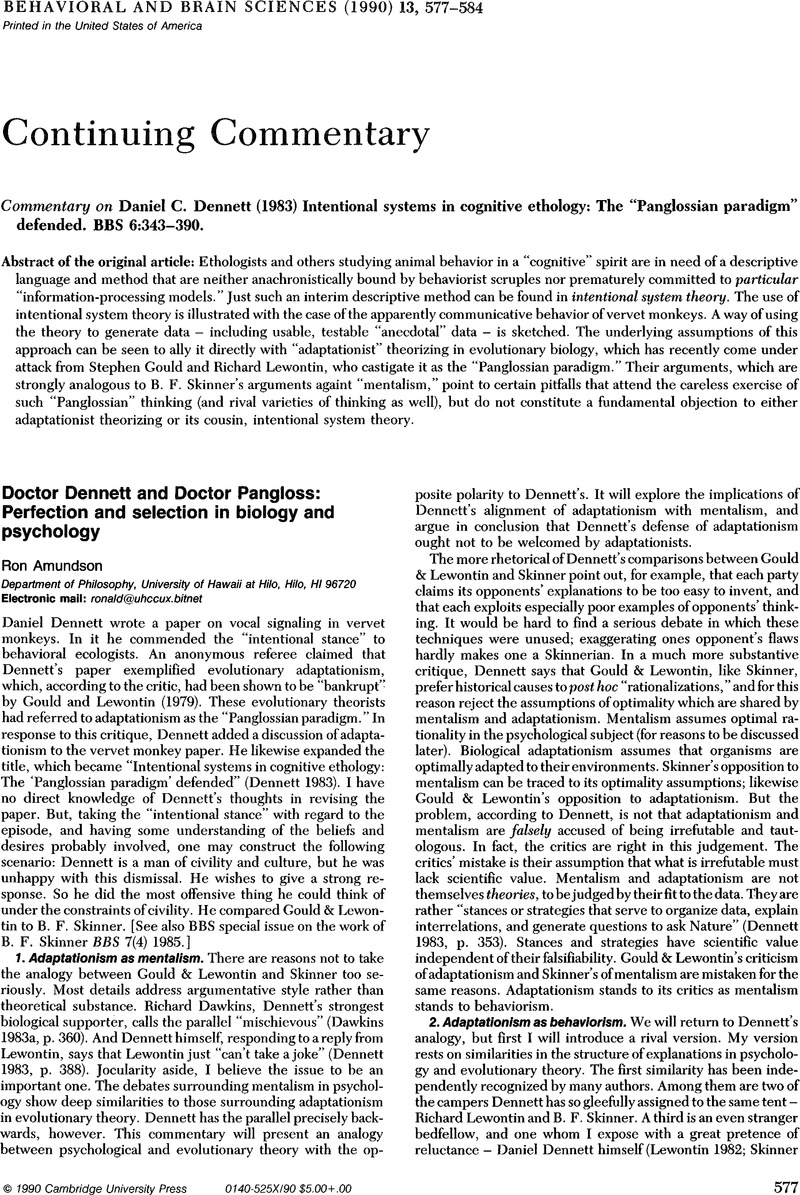Crossref Citations
This article has been cited by the following publications. This list is generated based on data provided by Crossref.
1993.
Naturaliser l'intentionnalité.
p.
299.
Amundson, Ron
and
Lauder, George V.
1994.
Function without purpose.
Biology & Philosophy,
Vol. 9,
Issue. 4,
p.
443.
Amundson, Ron
1994.
Two Concepts of Constraint: Adaptationism and the Challenge from Developmental Biology.
Philosophy of Science,
Vol. 61,
Issue. 4,
p.
556.
Amundson, Ron
1998.
Typology Reconsidered: Two Doctrines on the History of Evolutionary Biology.
Biology & Philosophy,
Vol. 13,
Issue. 2,
p.
153.
Forber, Patrick
2013.
The Philosophy of Biology.
Vol. 1,
Issue. ,
p.
145.
Rama, Tiago
2024.
Is a Cognitive Revolution in Theoretical Biology Underway?.
Foundations of Science,



